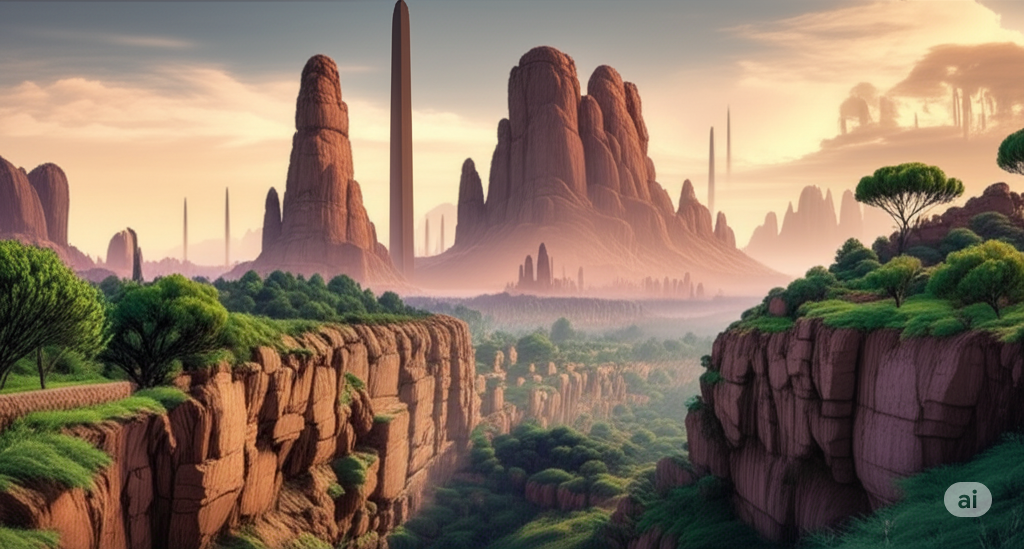Ethiopia, often called the “Cradle of Humanity,” is a land of unparalleled historical depth, cultural vibrancy, and breathtaking natural beauty. For centuries, its unique civilizations have sculpted landscapes, erected monumental structures, and preserved ancient traditions that continue to awe visitors. It’s no wonder that UNESCO, the United Nations Educational, Scientific and Cultural Organization, has recognized a remarkable ten of Ethiopia’s treasures as World Heritage Sites.
These sites are not just tourist attractions; they are global testaments to human ingenuity, spiritual devotion, and the raw power of nature. Join us on a journey to discover Ethiopia’s magnificent contributions to our shared world heritage.
Cultural Wonders: A Journey Through Time and Faith
Ethiopia’s cultural heritage sites tell stories of ancient kingdoms, profound faith, and enduring human spirit.
-
The Rock-Hewn Churches, Lalibela (Inscribed 1978): Imagine churches carved downwards into the living rock, not built upwards. That’s Lalibela. These eleven monolithic churches, dating back to the 12th and 13th centuries, are an astonishing feat of engineering and devotion. A major pilgrimage site for Ethiopian Orthodox Christians, Lalibela is a spiritual heartland and an architectural marvel that continues to inspire.
-
Fasil Ghebbi, Gondar Region (Inscribed 1979): Step into the “Camelot of Africa.” Fasil Ghebbi is a grand fortified enclosure in Gondar, Ethiopia’s imperial capital from the 17th to 19th centuries. Its unique castles and palaces showcase a fascinating blend of architectural styles – Portuguese, Hindu, and Arab influences harmoniously converging in stone, creating a distinct Ethiopian Baroque.
-
Aksum (Inscribed 1980): Journey back to the heart of a powerful ancient empire. Aksum was once a major trading kingdom (1st–13th centuries AD) that rivaled Persia and Rome. Today, its towering monolithic obelisks (stelae), royal tombs, and ancient castle ruins bear witness to its immense wealth and advanced civilization. This is also the fabled resting place of the Ark of the Covenant.
-
Tiya (Inscribed 1980): South of Addis Ababa lies Tiya, a site shrouded in ancient mystery. Here, 36 enigmatic megalithic stelae, many adorned with peculiar symbols, stand as silent sentinels of a proto-historic Ethiopian culture. Their exact purpose and age remain a subject of ongoing study, offering a tantalizing glimpse into practices from millennia past.
-
Harar Jugol, the Fortified Historic Town (Inscribed 2006): Nestled in eastern Ethiopia, the walled city of Harar is considered the “fourth holy city of Islam.” Its labyrinthine alleys, historic mosques (82 of them!), and unique townhouses date back to the 16th century, reflecting a vibrant fusion of Islamic and African cultural traditions. Don’t miss its bustling markets and the incredible tradition of hand-feeding wild hyenas at dusk.
-
Konso Cultural Landscape (Inscribed 2011): In Ethiopia’s arid south, the Konso people have cultivated a remarkable cultural landscape for over 400 years. This site showcases sophisticated dry stone terracing, fortified settlements, and unique social practices that demonstrate a profound adaptation to their environment. It’s a living testament to sustainable land management and communal organization.
-
Gedeo Cultural Landscape (Inscribed 2023): Ethiopia’s newest addition to the UNESCO list, the Gedeo Cultural Landscape, highlights an extraordinary agroforestry system. The Gedeo people have perfected a multi-layered cultivation method where towering trees provide shade for crops like enset (false banana) and coffee. This landscape also features sacred forests and dense clusters of megalithic monuments, embodying a rich heritage of traditional knowledge and spiritual beliefs.
Natural Wonders: The Cradle of Humanity and Majestic Peaks
Ethiopia’s natural sites are equally significant, preserving vital ecosystems and revealing secrets of our human origins.
-
Lower Valley of the Awash (Inscribed 1980): This critical paleoanthropological site is where “Lucy,” the 3.2-million-year-old Australopithecus afarensis, was discovered. The Awash Valley continues to yield invaluable hominid fossils, offering profound evidence of early human ancestors and fundamentally shaping our understanding of human evolution.
-
Lower Valley of the Omo (Inscribed 1980): Another globally renowned prehistoric site, the Lower Omo Valley is a treasure trove of hominid fossils, including Homo gracilis, providing crucial insights into our evolutionary journey. Beyond its scientific importance, the area is home to diverse indigenous groups, each with unique and vibrant cultural traditions that have adapted to this remarkable environment.
-
Simien Mountains National Park (Inscribed 1978): Often dubbed the “Roof of Africa,” the Simien Mountains are a spectacular natural wonderland. With dramatic jagged peaks, deep valleys, and sheer precipices, this park is home to several endemic and endangered species, including the magnificent Walia ibex, the elusive Ethiopian wolf, and the charismatic Gelada baboon. It’s a testament to Ethiopia’s incredible biodiversity.
Experience Ethiopia’s Heritage
Ethiopia’s UNESCO World Heritage Sites offer an unparalleled journey through human history, architectural genius, spiritual devotion, and natural splendor. They stand as powerful reminders of our shared past and the incredible diversity of human experience.
If you’re seeking a travel destination that truly connects you with the roots of civilization and showcases the beauty of an ancient land, Ethiopia’s World Heritage Sites await your discovery.
Discover more from Nexus
Subscribe to get the latest posts sent to your email.
